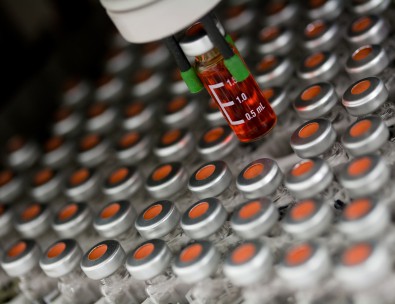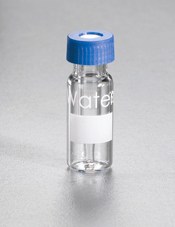The HPLC vial is a seemingly minor component of an HPLC system but it has the potential to create major problems. This is particularly true for quantitative analysis. The following list of dos and don’ts will help you to avoid some of the more common pitfalls.
Do:
Choose your vial carefully
There are many different suppliers of HPLC vials, and they each offer different vial options so it is important to choose the vial that is most suitable for your intended use.
For example, certified vials may be essential for sensitive trace analysis so that you can be sure that the peaks detected are definitely from your sample and not from the vial.
For more routine analysis, certified vials will probably be an unnecessary expense. You may require amber vials for light sensitive sample to maximise lifetime. Vial inserts may help to inject very small volumes of sample.
However, many labs like to use the same vial for all HPLC use and not have to choose a vial for each analysis. This is usually a good strategy but during method development (or in the initial method implementation phase if the method is already developed) it is a good idea to consider whether the vial may present any potential problems. The vial cap should also be considered for compatibility with both the sample and the HPLC injector.
Label each vial
You may think that you will remember what is in each of your vials but it is all too easy to forget or have a mix-up. Thus it makes sense to label vials. In a controlled environment (such as a QC lab) it is not just good sense but essential to label vials, to ensure that all analysis performed is fully traceable. There isn’t a lot of writing space on a vial so a clear and easy to decipher naming convention is advisable.
Equilibrate vials to desired temperature
The amount of sample injected needs to be carefully controlled for quantitative analysis, and the temperature of the sample for injection will influence the amount injected. Therefore, it is important to make sure that sample vials are equilibrated to the desired temperature prior to injection.
The ‘desired’ temperature may be the ambient lab temperature, or if a temperature controlled sample compartment in the autosampler is employed, it may be different to the ambient laboratory conditions (usually cooler to prevent solution degradation). In both cases sample vials should be equilibrated prior to injection.



Don’t:
Overfill
If the vial is completely filled to the top then it is likely that the injection volume will not be accurately injected due to the vacuum produced when the sample aliquot is removed. It is advised that the vial is filled to the shoulder to allow a headspace at the top.
Try to remove too much from the vial
If more than one injection is taken from the same vial (for example, injections of standards) then it is easy to forget that there is a finite amount of solution in the vial. Make sure that the total volume of injections taken does not exceed the capacity of the vial.
Reuse vials
Although it would be desirable to reuse vials, from a cost and waste perspective, it probably isn’t worth the effort of trying to clean and dry vials so that they can be used again. The effort is time-consuming and the risk of contamination is very high.
Related content from our Resources Library
Services related to this content that we offer
We have a number of training courses on the topic of HPLC, which includes an introductory course, and courses on HPLC method development (including a course specifically aimed at developing stability indicating methods) and HPLC troubleshooting.
Visit our courses page for a full list of available courses and the schedule of currently available course dates.
If you are looking for a book on HPLC, our ‘Introduction to HPLC for Pharmaceutical Analysis‘ by Oona McPolin, may be just what you need.
